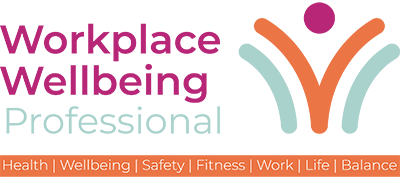Workplace wellbeing has come a long way. But despite the growing attention it receives, most strategies still follow a familiar blueprint, designed with neurotypical employees in mind.
For neurodivergent people, that blueprint can feel like a mismatch. And worse, it can lead to exclusion from the very programmes intended to help them thrive.
Neurodivergent employees – those with ADHD, autism, dyslexia, dyspraxia, and other cognitive differences – are often underserved by traditional wellbeing approaches. In 2025, true inclusion means more than good intentions. It means designing for different ways of thinking, feeling, sensing and interacting with the world.
Why This Matters More Than Ever
Neurodivergent people make up an estimated 15-20% of the global population, yet most workplace wellbeing strategies are still built with neurotypical assumptions at their core. Generic wellness apps, open-plan office mindfulness and yoga, and ‘speak up’ culture campaigns may support some employees but actively alienate others.
According to McKinsey Health Institute, inclusion is not only a moral priority – it’s a strategic one. It drives performance, retention and engagement. Yet research from Neurodiversity in Business (NiB) in 2024 found that 64% of neurodivergent employees feel their workplace doesn’t understand their needs. Worse still, 37% have not disclosed their neurodivergence due to fear of stigma or lack of trust. That disconnect takes a toll. When people mask, overcompensate or internalise stress just to fit in, the cost is silent burnout and disconnection.
And yet, this is also a massive opportunity. Neurodivergent individuals bring unique strengths: systems thinking, pattern recognition, creativity, hyperfocus and original insight. But these strengths can’t flourish without the psychological safety to show up as themselves. According to Deloitte (2024), organisations with inclusive cultures are 8x more likely to deliver better business outcomes, and 6x more likely to be innovative. This makes inclusive wellbeing a critical differentiator in an increasingly competitive talent market.
If we want wellbeing strategies that truly work for everyone, we need to rethink the blueprint. That starts by designing for difference – not for the majority.
Why Traditional Wellbeing Falls Short
Despite the growing investment in workplace wellbeing, many programmes still fall short of meeting the needs of neurodivergent employees. Even the most well-meaning wellbeing programmes can miss the mark when they’re built around uniform expectations.
Here are a few ways in which common approaches to wellbeing can frequently fall short:
Sensory Needs
Open-plan offices, harsh fluorescent lighting, constant background chatter and overwhelming environments can create sensory overload for people with heightened sensitivities – particularly those with autism, ADHD or sensory processing differences. These environments are not just uncomfortable, they can be distressing or even disabling.
Without sensory-friendly options, workplaces can become sources of strain rather than support.
Communication Styles
Workshops, townhalls, team check-ins and group-based activities are often core features of traditional wellbeing programmes. But for many neurodivergent employees – particularly those with autism or social anxiety – these formats can feel overwhelming or inaccessible.
When support only speaks one language, too many people go unheard.
Cognitive Load
Wellbeing support can inadvertently create friction for neurodivergent employees when access requires navigating complex intranets, unclear processes or irregular, poorly communicated offerings. For individuals with executive functioning challenges – common in ADHD and dyspraxia – this can be a blocker rather than a support.
When accessing help is hard work, it stops being helpful and can become harmful.
Emotional Energy
Some wellbeing programmes rely heavily on self-advocacy, asking employees to request adjustments, speak up in meetings or regularly disclose their needs. But this places a hidden burden on neurodivergent individuals, who may already be masking, managing internal overwhelm or lacking psychological safety.
Support should be something you receive, not something you fight for.
Five Design Principles for Neurodivergent Wellbeing
To build truly inclusive wellbeing strategies, organisations must move beyond performative parity, offering everyone the same support, and shift toward personalised inclusion that recognises different brains, needs and stressors. This doesn’t mean creating separate systems; it means embedding flexibility, clarity and empathy into everything you design.
To build inclusive wellbeing strategies that serve all employees – not just some – organisations must shift from uniformity to flexibility. From ‘fairness’ to equity. Below are five key design principles to help you do just that;
1. Design for Different Sensory Realities
The same environment can be stimulating to one person and overwhelming to another. Neurodivergent individuals may find typical office or meeting settings stressful, triggering or outright exhausting. Inclusive design begins with recognising that comfort is not uniform.
- Create quiet zones or “low stimulation” spaces within physical offices.
- Offer noise-cancelling headphones or alternative desk locations without requiring disclosure.
- Allow camera-off and audio-only participation in virtual meetings without judgement.
- Use soft lighting, reduce visual clutter and limit strong scents or sound pollution in shared spaces.
2. Create Multiple Ways to Engage
Many wellbeing initiatives rely heavily on social norms, like group workshops, open emotional discussions or extroverted team activities. For neurodivergent individuals who process differently or prefer written or one-on-one interactions, these formats can create friction or exclusion. True inclusion means meeting people where they are—not where the majority happens to be.
- Offer asynchronous or written alternatives (e.g., video recordings with transcripts, summary decks or reflective journaling prompts).
- Provide both group and 1:1 wellbeing check-in options.
- Make participation voluntary and avoid framing opt-out as disengagement.
- Use digital tools that allow anonymous input or private support requests.
3. Make Navigation Frictionless
Neurodivergent people may struggle with unclear systems, inconsistent messages or scattered wellbeing resources. If accessing support feels mentally taxing, it’s unlikely to be used. Accessibility is not only physical – it’s cognitive, emotional and navigational too.
- Consolidate all wellbeing resources into a single, clearly labelled portal or microsite.
- Use plain, jargon-free language and consistent icons or colour systems.
- Send regular, predictable nudges (e.g., calendar invites, email reminders) for key wellbeing touchpoints.
- Provide visual maps or short videos that explain how to use key systems.
4. Normalise Different Energy Rhythms
Many wellbeing models assume a consistent, linear energy and productivity. In reality, neurodivergent energy levels often fluctuate due to cognitive load, sensory overwhelm or masking fatigue. Designing with variable energy in mind is not indulgent, it’s sustainable. Rhythm, not relentlessness, should define healthy performance.
- Introduce no-meeting zones, rest breaks or “quiet hours” into team norms.
- Encourage flexible scheduling and autonomy over task sequencing.
- Avoid glamourising hustle culture or presenteeism as signs of commitment.
- Redefine productivity through outcomes and contribution – not visibility or volume.
5. Embed Psychological Safety as a Foundation
Psychological safety is the belief that people can express themselves without fear of judgement, exclusion, or reprisal. For neurodivergent individuals, this includes the freedom to ask for support, disclose (or not disclose) their needs, and work in ways that suit them best. Without this foundation, even the most thoughtfully designed strategies will falter.
- Train leaders and managers in neurodiversity awareness and inclusive communication.
- Role-model curiosity, non-judgement and transparency – especially from senior leaders.
- Clarify that disclosure is a choice, not a requirement, and ensure support is offered without prerequisite.
- Encourage team rituals that foster trust, such as gratitude circles, optional check-ins or shared team norms.
Design for Difference
Inclusive wellbeing isn’t about legal compliance or surface-level gestures. It’s about redesigning systems, environments and relationships so that all employees – regardless of how they process the world – can access support, feel safe and thrive.
This takes intention. It requires shifting from reactive fixes to proactive design. From loudest voices to quiet needs. From asking people to adapt to systems to adapting systems for people.
When we design for diverse minds, we create workplaces that are more humane, more effective and more future-fit for everyone.

Louise Whitfield is a Strategic Consultant at McCann Synergy, a leading employee experience agency, improving the world of work, creatively. She has worked in the field of employee experience, culture change, brand, and communications for over a decade, partnering with several global organisations for success.


